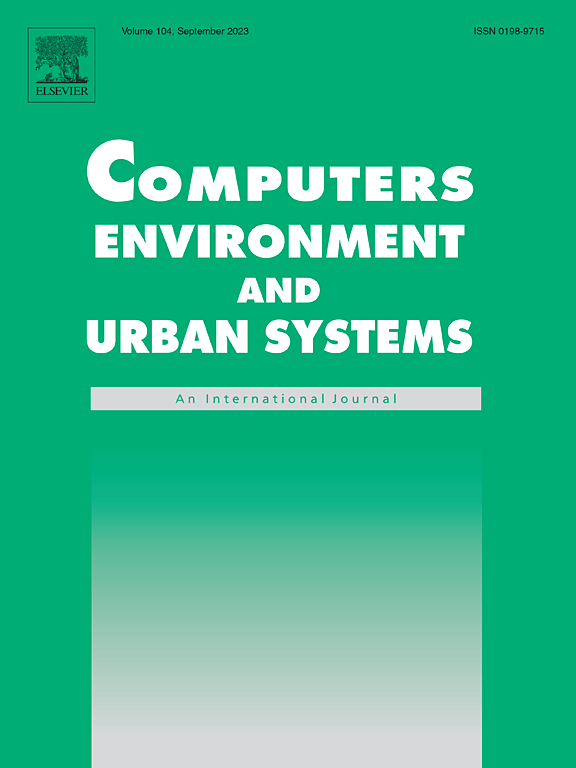ScaleFC: A scale-aware geographical flow clustering algorithm for heterogeneous origin-destination data
IF 8.3
1区 地球科学
Q1 ENVIRONMENTAL STUDIES
Computers Environment and Urban Systems
Pub Date : 2025-08-20
DOI:10.1016/j.compenvurbsys.2025.102338
引用次数: 0
Abstract
Exploring the cluster pattern of geographical flow facilitates the understanding of the underlying process of geographical phenomena among spatial locations. Despite recent advancements in identifying flow clusters, challenges remain when handling flow data with uneven length, heterogeneous density and weak connectivity. To solve the issues, this study proposes a Scale-aware Flow Clustering algorithm (ScaleFC). It identifies flow clusters of arbitrary lengths by employing an analytical scale to generate an adjustable neighborhood range of each flow. Meanwhile, inspired by the idea of boundary-seeking clustering, ScaleFC introduces partitioning flows to identify flow clusters with different densities, and separate the weakly-connected clusters. To validate the effectiveness, we compared ScaleFC with three mainstream baselines, i.e., AFC, FlowLF and FlowDBSCAN, on six synthetic datasets. The results presented that ScaleFC can accurately identify the clusters with complex structures, achieving an average accuracy improvement of 27 %, 17 %, and 15 % over the three competitors, respectively. The application on bike-sharing data with 16,140 flow pairs from Shanghai City demonstrated that ScaleFC is capable to capture both long-distance and short-distance movements, thereby providing a more comprehensive understanding to multi-scale human mobility patterns in geographical space.
ScaleFC:一种基于尺度感知的异构始发目的地数据地理流聚类算法
探索地理流动的集群模式有助于理解空间区位间地理现象的内在过程。尽管最近在识别流簇方面取得了进展,但在处理长度不均匀、密度不均匀和连通性弱的流数据时仍然存在挑战。为了解决这一问题,本研究提出了一种规模感知流聚类算法(ScaleFC)。它通过采用分析尺度来生成每个流的可调邻域范围来识别任意长度的流簇。同时,受边界寻找聚类思想的启发,ScaleFC引入分区流来识别不同密度的流簇,并分离弱连接的簇。为了验证其有效性,我们在六个合成数据集上将ScaleFC与三个主流基线(即AFC, FlowLF和FlowDBSCAN)进行了比较。结果表明,ScaleFC可以准确地识别具有复杂结构的聚类,平均准确率比三个竞争对手分别提高27%,17%和15%。在上海市16140对共享单车流量数据上的应用表明,ScaleFC能够捕捉长距离和短距离的移动,从而更全面地了解地理空间中多尺度的人类移动模式。
本文章由计算机程序翻译,如有差异,请以英文原文为准。
求助全文
约1分钟内获得全文
求助全文
来源期刊

Computers Environment and Urban Systems
Multiple-
CiteScore
13.30
自引率
7.40%
发文量
111
审稿时长
32 days
期刊介绍:
Computers, Environment and Urban Systemsis an interdisciplinary journal publishing cutting-edge and innovative computer-based research on environmental and urban systems, that privileges the geospatial perspective. The journal welcomes original high quality scholarship of a theoretical, applied or technological nature, and provides a stimulating presentation of perspectives, research developments, overviews of important new technologies and uses of major computational, information-based, and visualization innovations. Applied and theoretical contributions demonstrate the scope of computer-based analysis fostering a better understanding of environmental and urban systems, their spatial scope and their dynamics.
 求助内容:
求助内容: 应助结果提醒方式:
应助结果提醒方式:


